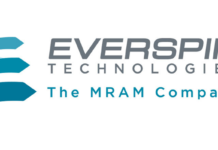
Market Summary :-
According to our Research intelo, the Global HDR Machine Vision Camera market size was valued at $1.2 billion in 2024 and is projected to reach $3.6 billion by 2033, expanding at a robust CAGR of 13.2% during the forecast period of 2024–2033. The primary factor fueling this impressive growth is the rapid adoption of automation and smart manufacturing solutions across diverse industries such as automotive, electronics, and pharmaceuticals. As organizations strive to enhance production efficiency, quality control, and process reliability, the demand for high dynamic range (HDR) machine vision cameras has surged, given their superior performance in capturing detailed images under challenging lighting conditions. This technological advantage is positioning HDR machine vision cameras as a critical component in the next generation of automated inspection and quality assurance systems worldwide.
Why HDR Is Becoming Essential
Industries once satisfied with standard imaging now require cameras capable of handling extreme contrasts bright reflections, dark shadows, and fast-moving objects in the same frame. HDR machine vision cameras meet these demands. They capture enhanced detail across varying light intensities, reducing inspection errors and improving process efficiency.
Applications Across Evolving Industries
From automotive assembly to advanced semiconductor fabrication, HDR cameras are becoming indispensable. Their ability to reveal hidden defects, track micro-level variations, and deliver reliable image data makes them a critical tool for modern inspection, measurement, and automation workflows.
Market Dynamics: What’s Driving Growth?
1. Surge in Automation and Smart Manufacturing
Factories are becoming smarter, and inspection stages now rely on real-time feedback. HDR cameras empower robots and AI systems to analyse products with exceptional clarity. This trend is significantly boosting market growth.
2. Expansion of Industrial IoT (IIoT)
The integration of cameras with connected systems enhances predictive maintenance, quality control, and workflow monitoring. HDR cameras, when paired with IIoT platforms, produce superior data accuracy that strengthens analytics.
3. Increasing Application in High-Contrast Environments
Traditional cameras struggle in environments with glare, metallic surfaces, or deep shadows. HDR variants eliminate this issue, making them ideal for industries like automotive, aerospace, electronics, and food packaging.
Technological Innovations Transforming the Market
Advanced Sensors and Image Processors
The latest HDR machine vision cameras feature multi-exposure sensors and high-speed processors capable of capturing multiple frames instantly. This ensures seamless blending of images and superior dynamic range without motion artifacts.
AI-Powered Vision Systems
AI integration is elevating HDR imaging to new heights. Machine learning can now interpret HDR data more efficiently, leading to enhancements in defect detection accuracy, object classification, and edge-case analysis.
Which Key Market Opportunities Are Driving Growth?
EV production lines require highly sensitive inspection tools. HDR cameras help detect micro-cracks, irregular welds, electrode alignment issues, and more creating new revenue opportunities in the EV ecosystem.
Surge in Semiconductor and PCB Inspection
As circuits become smaller and components more delicate, HDR imaging ensures better visibility for minute defects that standard cameras might miss.
Increasing R&D in Medical Devices
Precision is crucial in medical manufacturing. HDR cameras support stringent quality requirements, making them a preferred choice for surgical instrument and medical implant inspection.
Challenges Limiting Market Expansion
Higher Cost Compared to Standard Cameras
HDR machine vision cameras are more expensive due to advanced sensor technology. This may deter smaller industries from adopting them immediately.
Complex Integration with Legacy Systems
Companies using older vision systems may face difficulties upgrading to HDR-based workflows without significant infrastructure changes.
Competitive Landscape
- Sony Corporation
- FLIR Systems (Teledyne FLIR)
- Basler AG
- Omron Corporation
- Teledyne DALSA
- Baumer Group
- IDS Imaging Development Systems GmbH
- JAI A/S
- Allied Vision Technologies GmbH
- Toshiba Teli Corporation
- Cognex Corporation
- Keyence Corporation
- Canon Inc.
Future Outlook
According to our Research intelo ,The future of the HDR machine vision camera market looks promising. With continuous advancements in sensor technology, AI integration, high-resolution imaging, and machine automation, HDR cameras are poised to become the industry standard across multiple sectors.
As factories evolve toward intelligent, autonomous ecosystems, HDR imaging will play a foundational role in ensuring operational accuracy, quality assurance, and predictive control all essential elements of the next-generation digital industrial era.
Source:- https://researchintelo.com/report/hdr-machine-vision-camera-market

















